Sunrise on Monday, November 7
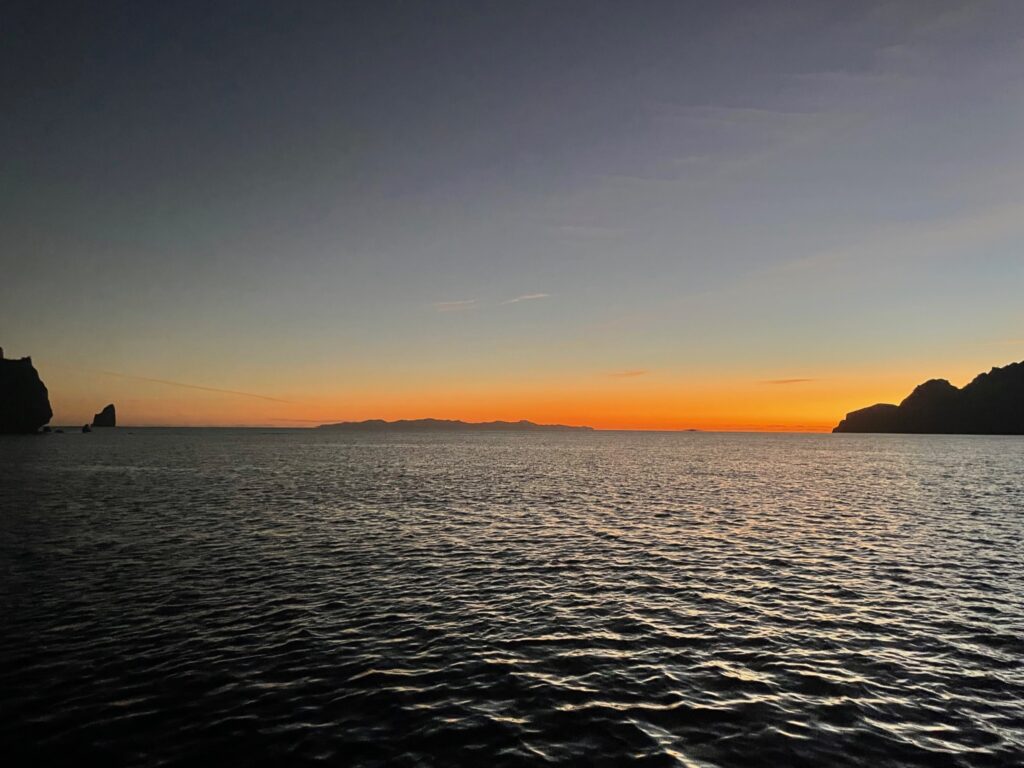
We got up early, did the last minute things to get Kosmos ready for sea, and pulled up anchor at 0620, as the sky began to lighten in the pre-dawn glow. As you may have noticed in the Bahia Agua Verde sunrise photos, while we got to see the beautiful dawn colors, we didn’t actually get to see the sun peek up over the horizon. After we turned the corner out of the bay, we saw the sun peeking out.
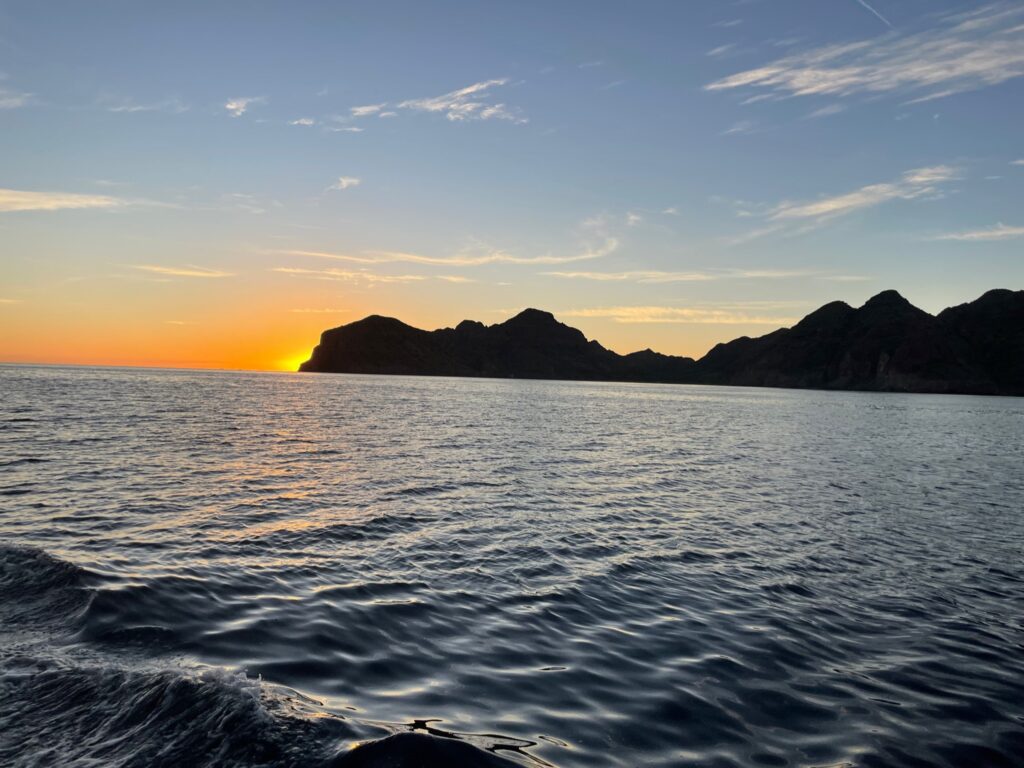
The seas were mostly calm, though we did turn on the active-fin stabilizers because of a small swell. The skies were dotted with white fluffy clouds.
We arrived at the northeastern anchorage in Isla San Francisco at about 1530 (3:30 pm). From the distance, the anchorage was stunning. It was a perfect crescent shape, with dazzling aquamarine blue water lapping up against a white sand beach.
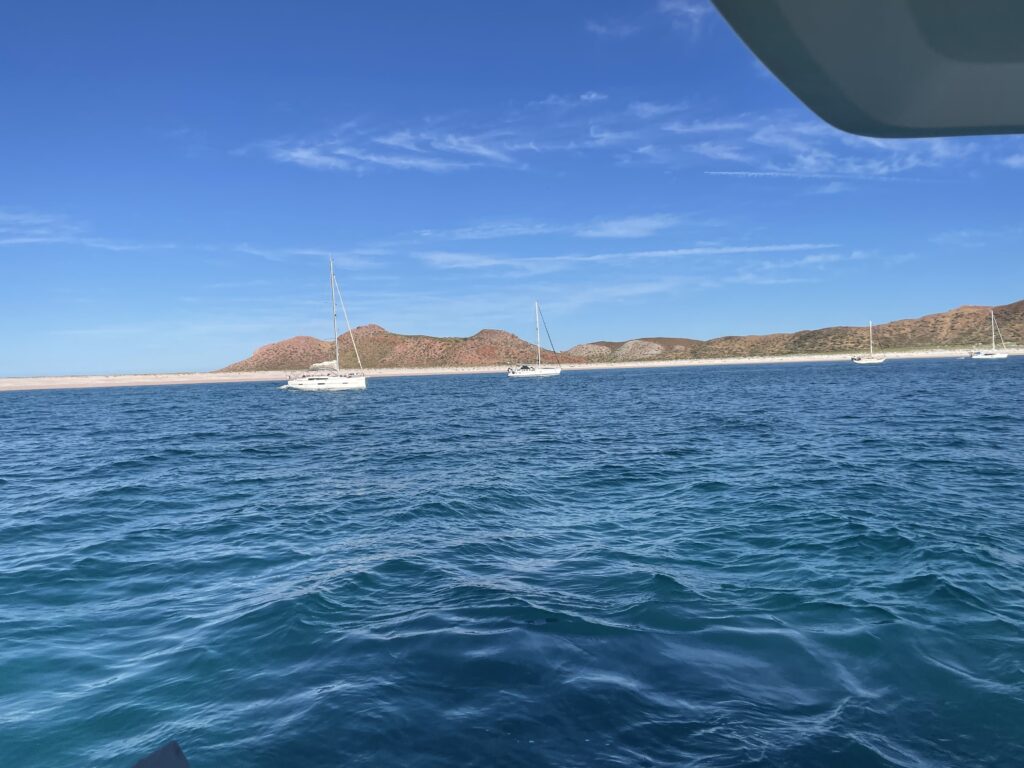
As we entered the anchorage area, the water was so clear that we could see the bottom. There were seven boats in anchorage, and another boat came in right behind us. They were mostly congregated towards the northern end of the anchorage, which was the most protected from the current winds. We picked a spot at the southeast end of the anchorage. We knew that this spot would be a bit rolly tonight, but it would be the most protected spot for the winds that were forecast for tomorrow and were supposed to last through the end of the week.
We got the dinghy down and went to the sandy part of the shore over on the north side where all the boats were anchored. Within two minutes, we were swarmed by noseeums. We tried to shoo them away and walk quickly to get them away from us, but to no avail. Within five minutes of arriving onshore, we hopped back in the dinghy and fled. The noseeums had also swarmed the dinghy and it took a while of dinghying around before they were fully gone. On the way back, we stopped and visited with a few of the boats in the anchorage. While the nosseums attacked all of us, they really went after Eric. In that short outing, Eric probably got twenty bites.
Sunset looking east. The darker mountains were the tip of the anchorage we were in, the lighter ones were the south end of Isla San Jose in the distance.

Sunset looking west. The full moon was glowing golden
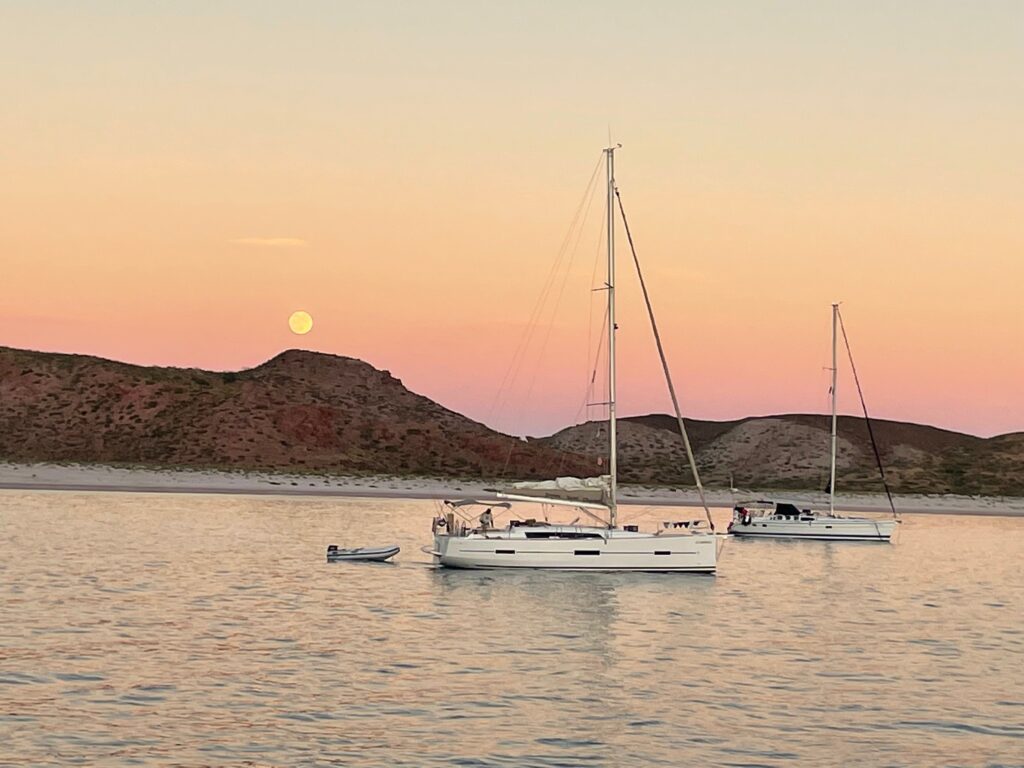
We went to bed at our normal time, but set alarm for 0300 in order to watch another astronomical rarity, the full lunar eclipse. The next full eclipse won’t be until March 2025. We thought it would be hard to get up, but it wasn’t. It was a rolly and uncomfortable night. Something woke Eric up a little before 2:30 am. He got up to check out the boat to make sure everything was ok. He saw that the fender between the dinghy and Kosmos had moved out of place. The dinghy had been bashing against Kosmos. He fixed the fender, then we all got up to watch the moon.
We’re glad we woke up early. At 0230, it was already ¼ eclipsed. Even at ¾ full, the light was so bright that we could clearly see the hills behind the anchorage. This is a terrible photo of the moon, but it gives you a sense of how brightly the area was illuminated.
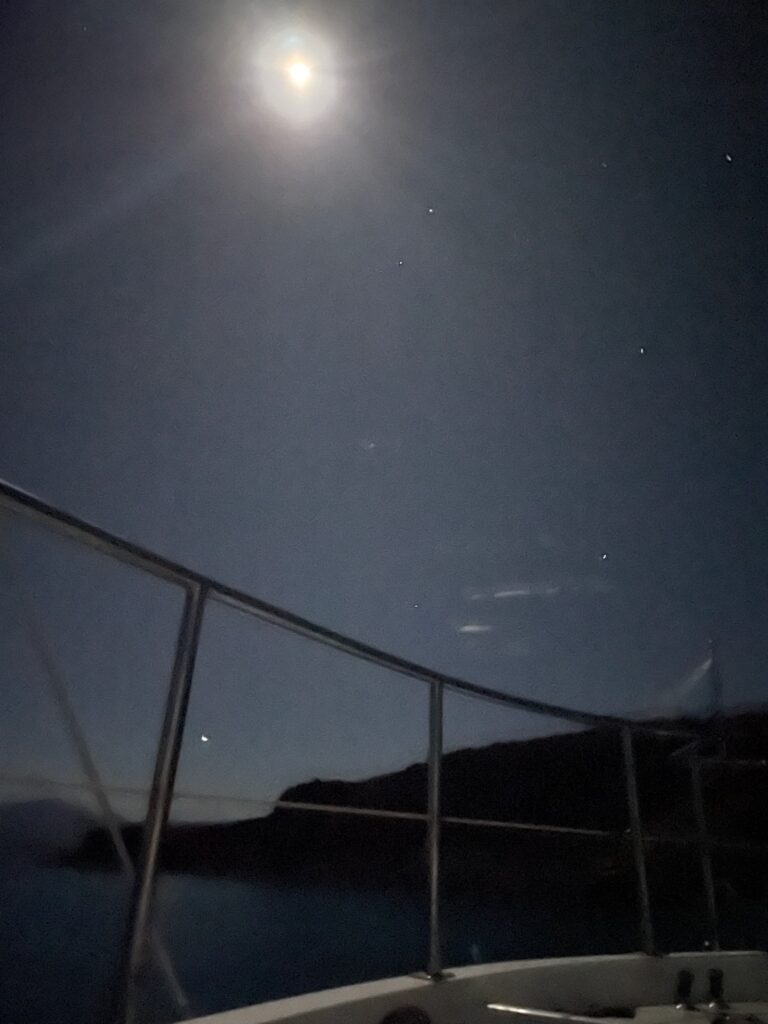
We were surprise at how fast the shadow was growing. The stars kept getting brighter and brighter as the moon shrank. Here is one where you can see that the moon is starting to turn red.
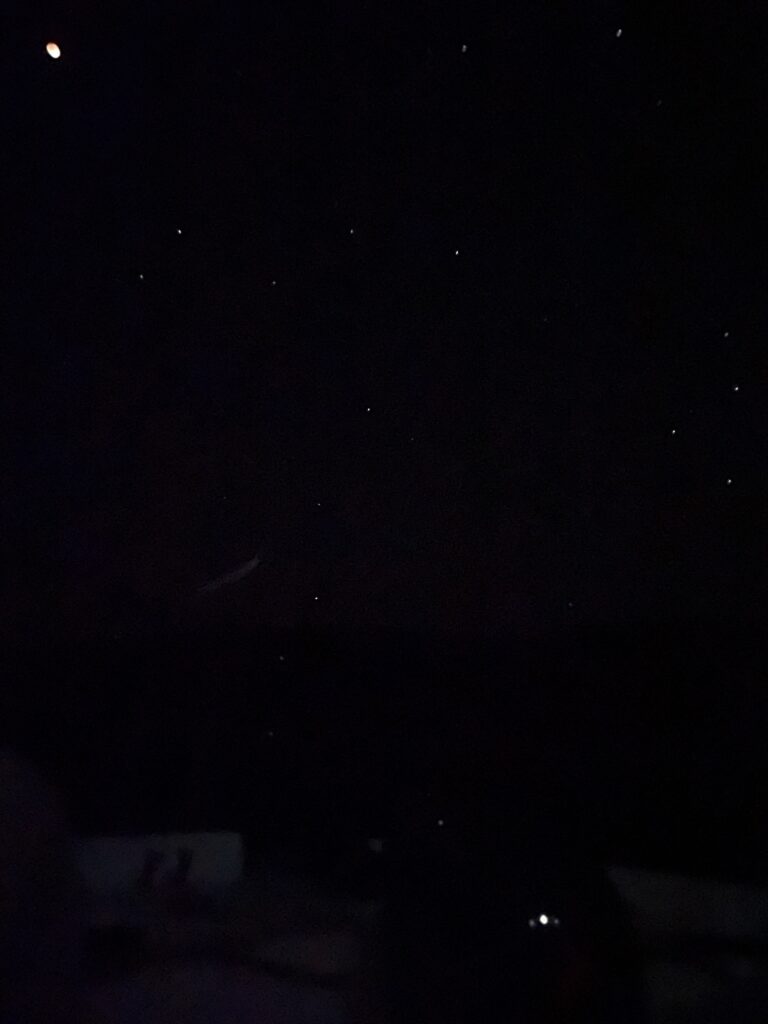
By 0315 am, it was fully eclipsed. We now understand why they call it a blood moon. The eclipsed portion didn’t disappear, it just went from a bright light to a dull brownish-red color. Even fully eclipsed, the ring of the moon was quite clear; it was just a brownish-red disk. If we didn’t know that it was eclipsed, we would have guessed it was hidden behind some kind of weird cloud.
It stayed fully eclipsed until 3:45. We went back to bed at 3:50, once the crescent lit back up. We were all too tired to watch it go back to fully illuminated again.
